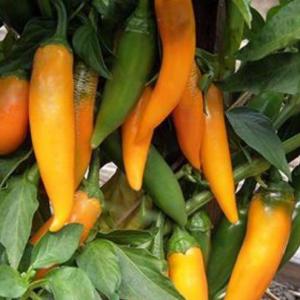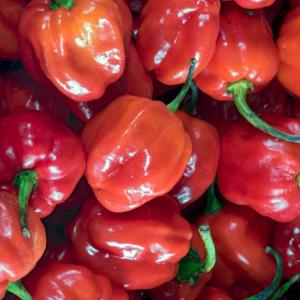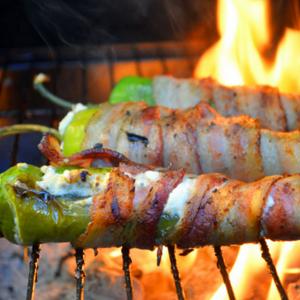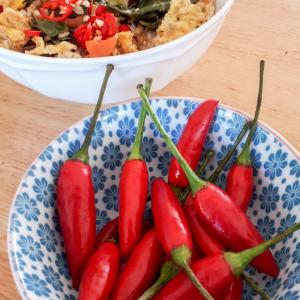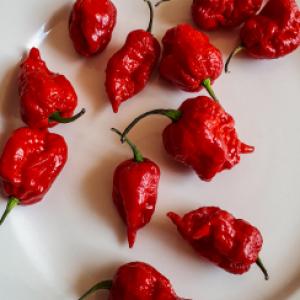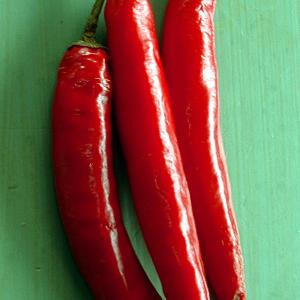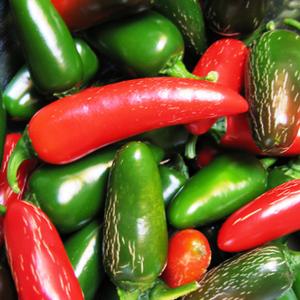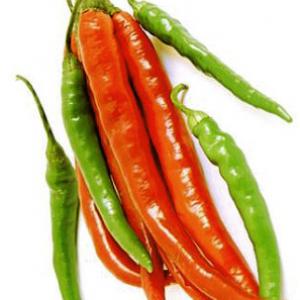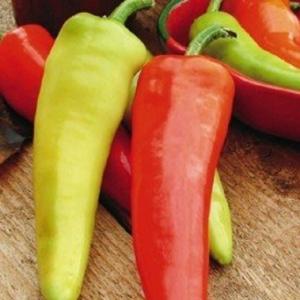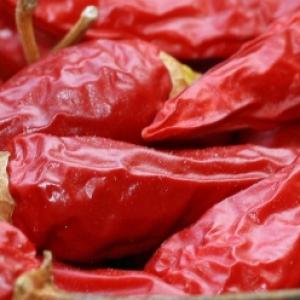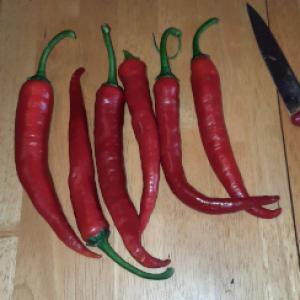Quality seeds for kitchen, cottage and native gardeners
Vegetable Seeds Catalogue
Chilli
Sds/g: 150-160 Feed Requirements: Moderate (chilli) – Heavy (larger chilli varieties) Usual Seed Life: 2-3 years
Cultural Notes:
- Chilli can be tricky to grow in some Tasmania, especially the higher elevation areas and valleys where frosts stay late and arrive early. Generally, the smaller fruited varieties will mature earlier and more prolifically, as a result we have had no problems with prolific chilli bushes here. Chillis are very frost sensitive, however, we have overwintered chilli bushes in a hothouse and they have grown to over 1.2 m high and produced huge amounts of fruit in their second year.
- In cooler climates such as Tasmania: Seed is started at the end of winter and transplanted out at the end of October on the east and north coasts and mid-November in the inland areas. When transplanting incorporate plenty of compost and fertiliser into the soil and space on 40-60 cm centres. To produce a greater quantity of sweeter fruit mulch with black plastic around the base of each plant. It is wise to stake all plants if your garden is in a windy spot or to keep the lower branches of larger fruited varieties off the ground. Side dress with an organic liquid fertiliser every 3 weeks up to the end of February to help plant growth and fruit production.
- If you are planning to overwintering a plant either transplant seedlings into large pot or carefully dig the plant at the end of the season (March inland and early April on the north and east coasts ) and replant or move the pot into a hothouse. Move back outside when you would normally plant your transplants and be ready for a huge crop.
Problems:
- Cool snaps and cold nights can really set back or kill plants. Ensure plants are in a sheltered spot or on the north side of a fence or wall.
Harvest:
- Varieties ripen from green to red, orange or yellow. As capsicum plants ripen they generally get thicker walls, juicier and sweeter while chilli plants also get thicker walls but also more pungent. Harvest full sized green fruit to early in the season to promote more flowering and fruit set. Chilli plants usually have a huge amount of fruit on them at the end of the season (March inland and early April on the north and east coasts), pick the ripe ones and dry or mince into a paste. Leave the green ones on the plant and pull the plant out roots and all, shake off excess soil and hang upside down out of the sun to let the fruit ripen and dry.
Sowing periods
A vibrant orange, medium to hot chilli known as ‘Shipkas’ in their Bulgarian home (although there’s debate over whether it originated in Hungry first). This heirloom has a fruitiness to accompany the heat. A thicker fleshed chilli that is super crunchy & is used fresh, roasted, pickled or in chutneys. While it has some cold tolerance in cooler areas it’s best sown in a sheltered position. 15 seeds.
You like it hot, well this is up there in Scoville rating, the not-so-humble habanero. Loved by chilli aficionados for the intense heat but also its sweet undertones. Definitely not for the faint-hearted though. The 4-5cm x 3cm fruits ripen from green to red. Use fresh or dried. Prefers hot summers, in cooler areas yields outdoors can be erratic. 15 seeds.
A popular heirloom chilli with a mild heat. They mature from a dark green to a glossy red and grow to 15-20 cm in length, making them ideal for stuffing. Use green for ‘chilli verde’ or ‘chilli rellinos’. The mature red fruit can be used fresh and are often dried or smoked. The perfect chilli for those who do not like too much heat. Not to WA. 25 seeds.
‘Big Jim’ is a gentle giant as it has a mild heat rating of about 2,000 Scoville units. A big chilli growing to 20-30 cm long and up to 7 cm wide. It’s large size, thick flesh and mild heat make it ideal for stuffing or using like a capsicum. The chillies can be harvested young (green) or left to mature (red). Mature red chillies have a fruity, sweet flavour with mild heat. 25 seeds.
One of the most popular chillis used in SE Asia. Also, one of the most popular grown varieties as the birdseye is relatively tough, prolific and has enough heat to keep the spice lovers happy. While not frost tolerant it handles the cool summers regions well. The ripe red chillis grow to 4cm x 1 cm. A versatile chilli that can be used raw, add to dishes while cooking, pickled or dried. 40 seeds.
Blow your noodle with the world’s hottest chilli. This is one mean and ugly looking critter, only the most hard-core chilli heads!! A devilish red, wrinkled chilli averaging over 1.5 million Scoville Heat Units. Said to have a fruity flavour, but geez I dunno – it just feels like fried taste buds to me. A sub-tropical chilli that loves a warm/hot sheltered area. 20 seeds.
An early medium hot jalapeno that is suited to cooler areas with short summers. These chillies are great used fresh, ripening from green (milder) to red (medium hot but with a hint of sweetness) or pickled for use through winter. 5-6 cm long by 2.5 cm wide. Not to WA. 25 seeds.
A medium-hot chilli that is early to ripen in cooler areas. It is 200 mm long, 20-25 mm diameter at top, pointed and usually not straight but with twists. Can be cut in chunks and put in stir-fries to spice them up. Ripest and hottest when the chilli is red. Early to ripen. Not to WA. 10 seeds.
A medium-hot chilli that is early to ripen. They taste great fresh and are easy to stuff, peel after roasting and thick fleshed for frying. They ripen from yellow to orange to red, so they look and taste great pickled. These chillies are 12 cm long by 4 cm wide. 25 seeds.
Ooooh yeah! This is hot, if you love a chilli with the kick of a brumby this is it. Thin fruit, about 5 mm at top and 30-50 mm long, tapering to a point. Rarely do you get a variety like this that produces an excellent hot chilli yield in cool to temperate climates. On our farm this chilli always continues to produce well into autumn. Used fresh or dried. Not to WA. 20 seeds.
A highly productive & early chilli that grows well outdoors in cooler southern summers. An abundance of chillies (to 15 cms) are produced on a strong bush. It’s a hot chilli with a good heat level when green. As it ripens to red the heat intensifies! While looking like a cayenne variety it has thick, juicy walls making it ideal to use fresh or for sauces. 10 seeds.
